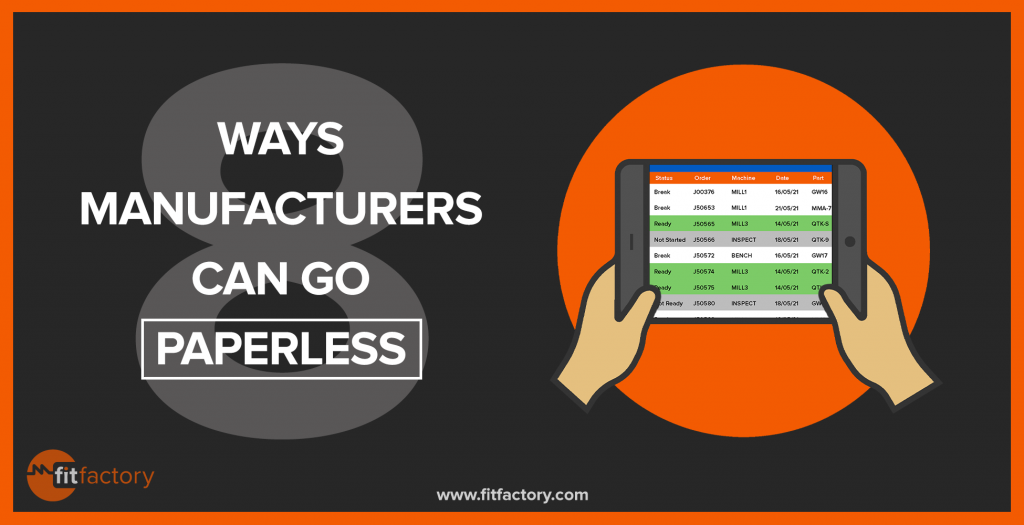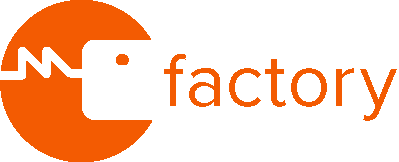
Paperless manufacturing is growing in importance as the industry comes under significant pressure to enhance efficiency and reduce costs.
As manufacturing firms, along with their suppliers and customers, grow increasingly reliant on electronic communication, going paperless is no longer just a matter of convenience. It is now an imperative at a time when eliminating waste, reducing cycle times, and cutting costs are all top priorities.
That said, many firms struggle to identify the practical steps needed to implement a paperless shop floor. Shop floor management often still relies heavily on paper-based information, such as worker timesheets, maintenance and safety reports, invoicing, and materials requirements planning (MRP) reports.
While most manufacturing companies are already using industry-standard solutions like Microsoft 365, there is a lot more to going paperless than simply replacing paper documents with Office applications. For example, by using a solution like our shop floor data capture (SDFC) system, you can enjoy all the benefits of having a fully paperless system from quotation to invoice.
What are the benefits of paperless manufacturing?
The benefits of going fully paperless are much broader than simply saving costs and reducing environmental impact. As part of the wider strategy that is digital transformation, implementing paperless operations is key to achieving growth and success. Here are a few of the benefits of going paperless:
- Declutter your manufacturing facilities and offices
- Streamline quotation and invoicing processes
- Improve communications between workers
- Access accurate and timely information
- Simplify resource planning to reduce waste
Fortunately, reaping the above benefits does not have to be prohibitively difficult or expensive, even for small manufacturing firms. Today’s integrated factory management systems provide flexibility, availability, and scalability by bringing all your operational data together in real-time.
Here are some of the ways you too can join the paperless manufacturing revolution:
#1. Digitise the clocking in and out process
Some factories still use printed timesheets or punched cards for workers to clock in and out. These days, most are using simple electronic systems instead, but these lack connectivity and convenience in many situations. A better solution is one that passes attendance information, in real-time, to the back office over the internet. Better yet, many modern clocking in systems can even support remote workers by way of apps installed on end-user smartphones or tablets.
#2. Introduce factory-wide cloud connectivity
Installing mission-critical software on dozens or even hundreds of different devices can quickly become such a monumental task that it is almost better to stick to paper reports. When you factor in data exchange between these myriad systems, the challenge becomes even greater. However, by using cloud-based software, you get to keep everything in one place, one that is accessible from anywhere. That means less time spent installing or maintaining software and printing out reports to manually hand over to colleagues and supervisors.
#3. Automate routine shop floor operations
Repeatable operations that are critical to the everyday functions of your business should be automated wherever possible. This includes automating shop floor management tasks, such as maintenance routines, task scheduling, and routine production processes, at virtually any scale. These lean factory management solutions reduce the need for repetitive, error-prone manual processes to enhance the morale and productivity of your employees.
#4. Implement IoT sensors for machine monitoring
The industrial Internet of things (IIoT) is the driving force behind what manufacturers are calling the fourth industrial revolution. IoT sensors connected through the web via wireless or 4G/5G networks can transmit critical data, such as machine status and operational parameters, right from the shop floor. This facilitates proactive, predictive maintenance to reduce the chance of hardware failures and disruptions in a way that relying on paper-based maintenance reports never could.
#5. Integrate your MRP and ERP systems
Materials requirements planning is an essential part of the manufacturing process, and getting it wrong can result in wasted resources and longer cycle times. Many delays are a direct result of relying on cumbersome manual processes to exchange key information, including by using paper-based reports and order forms. By integrating MRP systems with your wider enterprise resource planning (ERP) infrastructure, you can link your data streams seamlessly.
#6. Conduct paperless corporate meetings
The reality is that many employees dread corporate meetings because, all too often are they poorly presented, lack relevance, or are a waste of time. These issues are even more likely to arise if you are relying on paper-based presentation documents and printed reports. A much better approach would be to use innovations like interactive whiteboards, digital and graphical presentations, and real-time access to relevant data. These approaches also translate well into a virtual meeting scenario.
#7. Leverage business intelligence analytics
While getting data directly from the shop floor via IoT sensors offers huge potential for boosting efficiency, it is what you do with that data that really counts. Integrating business intelligence (BI) systems helps turn the data into actionable insights. For example, you can view resource consumption, manufacturing cycle times, and machine statuses in real-time, and make important and informed decisions on the spot. This is simply impossible with paper-based reporting, given the inherent time lag involved in printing and handing over reports.
#8. Use electronic shelf labels in warehouses
You probably already have a labelling system for all the various resources and products kept in your warehouses and other storage facilities, but did you also know that even these can be digitised? Electronic shelf labels (ESLs) can augment your employees’ awareness regarding the conditions of your stockpiles and machines. They can also help automate operations like providing simple handling instructions to workers or allowing workers to update stock reports without having to fill in a paper form or use a computer back in the office.
The paperless future of manufacturing
Lean manufacturing is an ideology that revolves around production processes that maximise productivity and minimise waste. Paperless shop floor operations are central to that concept, and while this is not something you can expect to achieve overnight, there are things you can start doing almost immediately to take your business to the next level of digital success.
Fitfactory helps manufacturing and engineering companies adopt paperless operations to reduce costs, increase efficiency and enhance risk management. Get in touch today to request a demo of our smart manufacturing software.
